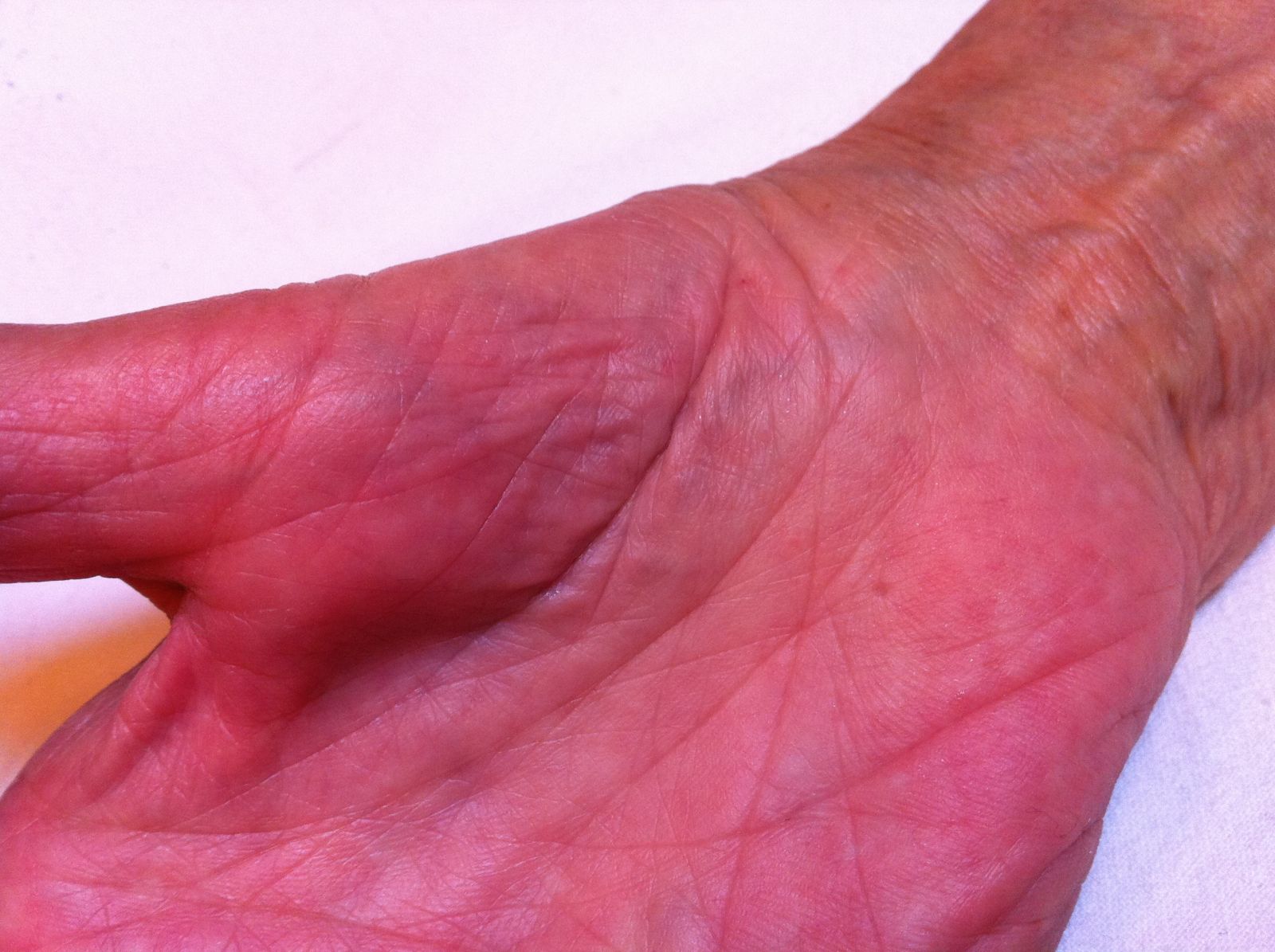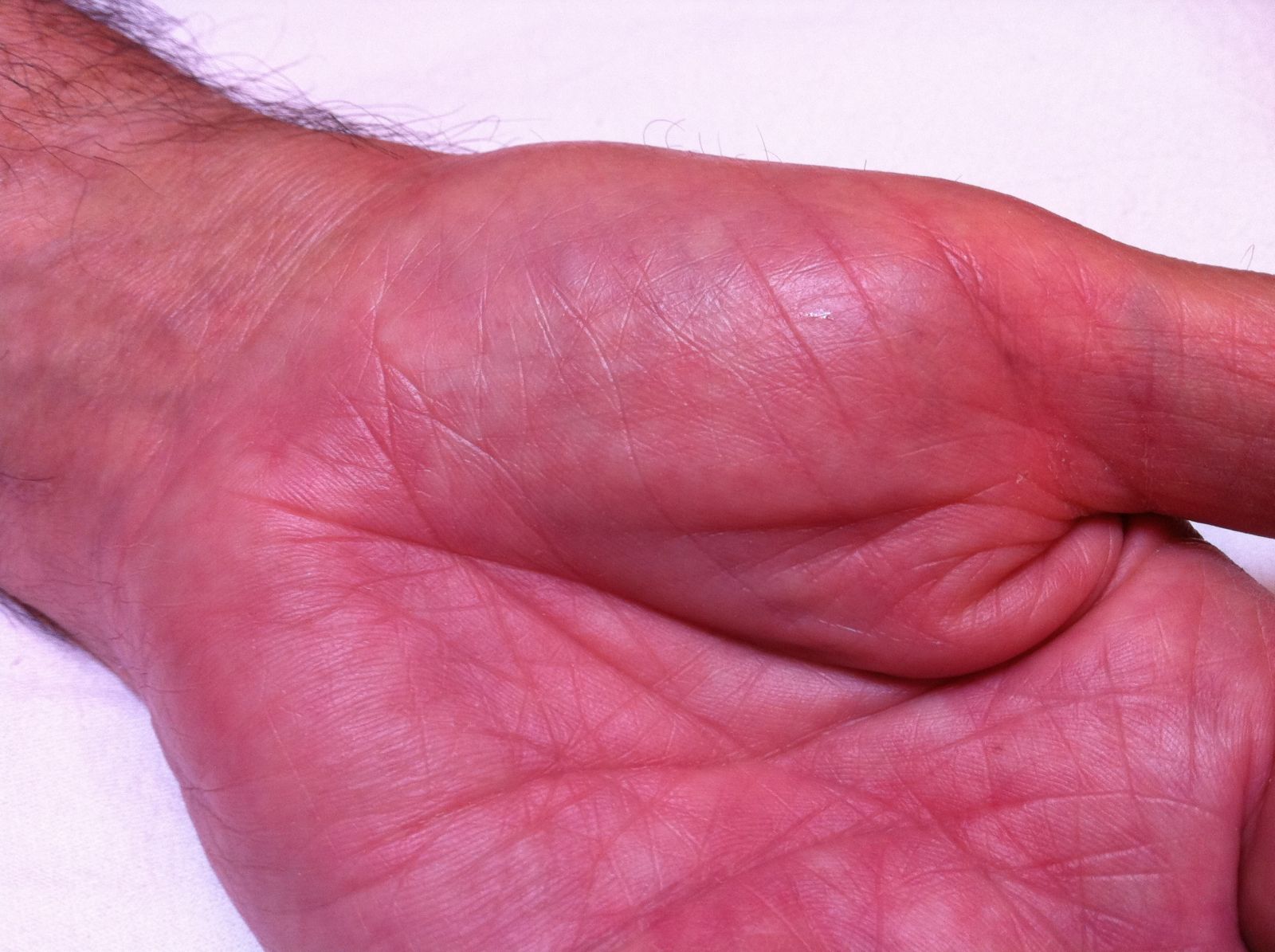Examination
Physical examination of the patient is usually of rather limited help in diagnosing CTS. It may reveal evidence of other problems which either provide alternative explanations for the symptoms or which may predispose to CTS. Thus signs of arthritis, thyroid disease or peripheral neuropathy would be relevant. The physical signs of CTS itself consist of loss of sensation in the median nerve innervated fingers of the hand and weakness and wasting of the small hand muscles which are connected to the median nerve, principally those at the base of the thumb (the ‘thenar eminence’). However these signs do not appear until nerve injury is quite advanced and CTS should really be diagnosed and treated before they develop. Once muscle wasting has appeared it rarely recovers.
Muscle wasting can occasionally be deceptive. The hand shown here appears to show marked thinning of the muscles of the thenar eminence

... and the patient does have some degree of carpal tunnel syndrome but the surface motor potentials recorded from these muscles

... show that, although the right hand recording is somewhat delayed, the muscle is still generating a surface motor potential of 3.9mV, indicating that there is actually a reasonable amount of muscle tissue present and indeed the patient has only slight weakness of thumb abduction when tested, The explanation for this appearance is that the underlying bony structure is not 'normal'. The patient has had a trapezectomy (removal of one of the small bones of the wrist) and it is the change in the bony structure of the wrist which has led to the change in contour of the thumb.
In contrast, this hand shows rather less impressive wasting seen just as the slight concavity of the border of the thumb.

... but in this hand, abduction of the thumb is profoundly weak and no surface motor potential at all can be recorded by stimulating the median nerve either proximal or distal to the carpal tunnel. The clinical clue to the difference between these hands is found in testing how strong the movement of abduction of the thumb is.
Revision date - 15th April 2011
